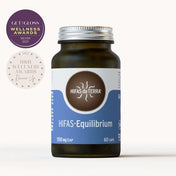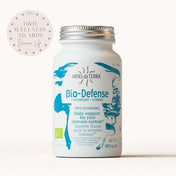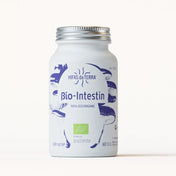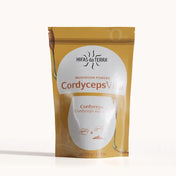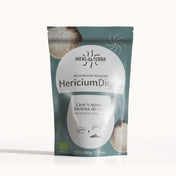What are the terpenes?
Maybe the word terpenes is not very familiar to you, but the Licopenos, a specific type of terpeus present, for example, in the tomatoes and watermelons.
What defines these phytochemical compounds?
- One of the most characteristic features of the terpenes is its antioxidant value, but they are also the responsible for aroma and color of fruits, vegetables and fungi.
- In high concentrations, we can talk about PHARMACOLOGICAL PROPERTIES of the terpenes. Thus, for example, some natural terpenic derivatives such as mentol, eucalyptus or citral are used for symptomatic treatment of cough and cold.
Hifas Da Terra communication 1/04/2019
Content index
Your practice omnipresence in the plant world and its high antioxidant value are two of the reasons why it is recommended to follow a multicolored diet And therefore, therefore, in foods that help fight the oxidation that our cells suffer from stress, pollution, an inadequate diet ...
International organizations such as WHO They promote, through their food guides, the daily consumption of 400 g of fruits and vegetables for its antioxidant content, among other reasons.
In addition, the risk of chronic diseases and cancer with terpenoid consumption has been related: A diet rich in terpenoids is inversely proportional to the risk of suffering from this type of pathologies.
See this post on Instagram
The properties of the terpenes
The terpenes are, together with the polysaccharides, the bioactive compounds that make the Reishi (Ganoderma lucidum), be considered the king fungus. This fungus has a large amount and variety of terpenes, and many of them are considered unique. These include the ganoderic acids, lucid acid, ganoderol, etc
Why is the action of the terpenes in cancer studied?
The terpenes act on cancer cells as a toxic. They prevent their development and favor their reprogramming to cause death in a precipitous way, how? This is the answer: They act like cytotoxic, harmful substances for sick cells, even damaging cell DNA and causing the death of the cell itself (which is also known as apoptosis). Some of the reishi terpenes have proven to have a cytotoxic effect on Leukemia, lung cancer, colon, cervical, breast and sarcoma.
They behave as cytostatics, Substances capable of inhibiting the development of tumor cells. The cytostatic effect of some reishi terpenes has been evidenced in different phases of Cervical carcinoma, breast cancer and lung cancer. They induce apoptosis. They affect the mechanisms of our body that allow to activate the death of damaged cells. The proopopototic capacity of the reishi terpenes has been observed in Lymphomas, cervical and pulmonary carcinomas and melanoma. Although most of the investigations consulted on the action of the terpenes have been developed in the preclinical phase and combined with other treatments, the published studies consider this useful information for their clinical use at the preventive level, especially in those oncological processes of a hormonal nature.
What terpenes do we find in Reishi's extract?
The analytics of the Reishi Extract of Hifas da Terra made by external laboratories confirms the presence of the following terpenoid compounds:
- Ganoderic acids A, F and D
- C and C2 ganolucinic acids
- lucidumol b
- lucidone a
Triterpenes (30 carbon terpenes) represent one of the most important groups of bioactive compounds found in medicinal fungi. According to published studies, Triterpenes of G.lucidum like him lucidumol b are antiviral and antitumor agents, while others have found activity to reduce the risk of atherosclerosis.
Some publications suggest that origin, he cultivation system and the extraction methods chosen They could vary the reishi compositional profile at the qualitative and quantitative level. However, the presence of ergosterol and lucidumol B has been considered by some authors as a Quality criterion in the biochemical profile of this fungus.
Other bioactive compounds of the Reishi
Many of the anti -inflammatory, antiallergic and hypoglycemic properties of the Reishi are also due to the presence of other compounds, mainly polysaccharides, but also of phenolic and glycoproteins. Among others stand out:
Polysaccharides (alpha, beta and d-glucanos)
Studies In vivo and In vitro They demonstrate the immunomodulating, antitumor, hypoglycemic and antioxidant activity of the beta-glycans, a type of polysaccharide present in the Reishi.
C18: 3n6 alpha-linolenic acid (from the Omega-3 series)
As collected on the website of the Heart Foundation, the incorporation into the diet of omega-3 fatty acids Help to have a normal cardiovascular health and reduces the risk of cardiovascular diseases. We associate this fatty acid from a compound present in seeds, nuts, fish, shellfish ... among its properties stands out its anti -war, vasodilator, hypotensive and antithrombotic action.
Sterols
Biological function of the terpenes
We have already seen the effects of the terpenes on human health, but no less important are their biological functions in the living beings that make up. In plants, for example, They help perform photosynthesis and protect them from solar radiation. Besides, They constitute a natural barrier against insects and high temperatures. In short, it is demonstrated that The protective function of the terpenes is essential for human life and for the preservation of nature as we know it.
References
- Brijesh Kumar Singh, Madhulika tripathi, Bhushan P. Chaudhari, Pramin K. Pandey, Poonam Kakkar (2012) Natural Trips Prevent Mithochondrial Dysfunction, Oxidative Stress and Release of apoptotic During Nimesulide-Hepatotoxicity in Rats. Plos One.
- Cano-Flores, Arturo (2013) Biotransformation of triterpenes with different microorganisms. Mexican Magazine of Pharmaceutical Sciences, 44 (2), 7-16.
- Dudhgaonkar S. et al. (2009) SUPPRESSION OF THE INFLAMMATARY RESPONSIBLE BY TRITIPES ISOLATED FROM THE MUSHROOM GANODERMA LUCIDUM. Int immunopharmacol., 9 (11), 1272-80.
- El-Mekkawy S, Meselhy Mr, Nakamura N, Tezuka and, Hattori M, Kakiuchi N, Shimotohno K, Kawahata T, Otake T (1998) Anti-HIV-1 and Anti-HIV-1-Protease Substances from Ganoderma lucidum. Phytochemistry. Nov; 49 (6): 1651-7.
- Irene Roceros Ramos. Nutritional and healthy properties of fungi. Technology Center for Mushroom Research of La Rioja.
- J.graßmann (2005) Terpenoids as plant antioxidants. Vitamins & Hormones
- Li B. et al. (2013) Protective Effect of Ganodermanondiol Isolated from the lingzhi Mushroom Against Tert-Butyl Hydroperoxide-Induced Hepatotoxicity Through NRF2-MEDIATED ANTIOXIDANT ENZYMES. 53, 317-24.
- Li P. et al. (2013) Triterpenoids from Ganoderma lucidum and their cytotoxic activities. Nat Prod., 27 (1), 17-22.
- Mariana Verga, Lygia Salgueiro (2017) Potentialities Medicine of Ganoderma lucidum. Phytotherapy Magazine, 17 (2), 145-163.
- Matus, María Francisca, Jorquera-Román, Manuel, & Zúñiga-Hernández, Jessica (2017) Anti-Proliferative Effect of Terpenes On Human Prostate Cancer Cells: Natural Sources and Their Potential Role As Chemopreventive Agents. Chilean Nutrition Magazine, 44 (4), 371-382.
- Moreno P, Henry, Martínez M, Alejandro, & Fujimoto, Yoshinori (2011) Isolation and identification of two sterols and a triterpenoid of the fruitful body of Ganoderma lucidum cultivated in Colombia. Vitae, 18 (1), 11-15.
- Pandey Govind (2011). Vegetable antioxidant Act Against Cancer and Other Devinases. International Journal of Pharmaceutical Studies and Research.
- Russell M. Paterson (2006) Ganoderma - A Therapeutic Fungal Biofactory.phytochemistry 67 1985–2001.
- Reyna María Cruz Bojórquez, Javier González Gallego and Pilar Sánchez Collado (2013) functional properties and health benefits of the lycopene. Nutr. Hosp. Vol.28 No.1 Madrid Jan./FEB.
- Ríos-Cañavate J.L. (2008) Ganoderma lucidum, a fungus with immunostimulant properties. Phytotherapy Magazine, 8 (2), 135-146.
- Wheat, Ángel, & Suárez Medellín, Jorge (2011) Biological Active Metabolites of the Genus Ganoderma: Three Decades of Myco-Chemistry Research. Mexican Mechan of Mycology, 34, 63-83.
- Urango Marchena la, Montoya Parra Ga, Cuadros Quiroz Ma, Henao DC, Zapata Pa, López Mira L, et al. (2009) Effect of bioactive compounds of some health foods. Perspect Nut Human.11: 27-38.
- Website of the Spanish Heart Foundation: www.fundacionelcorazon.com.
- WHO website
Increase the consumption of fruits and vegetables to reduce the risk of noncommunicable diseases. - Wu GS. et al. (2012) Ganoderic Acid DM, A Natural Triterpenoid, Induces Dna Damage, G1 Cell Cycle Arrest and apoptosis in Human Breast Cancer Cells. Phytotherapy, 83 (2), 408-14.
- Yang H, Dou QP (2010) Targeting apoptosis pathway with natural Terpenoids: implications for treatment of breast and prostate cancer. Curr Drug Targets. 2010; 11 (6): 733-44.
- Yang H, Dou QP (2010) Targeting apoptosis pathway with natural Terpenoids: implications for treatment of breast and prostate cancer. Curr Drug Targets. Jun; 11 (6): 733-44.

